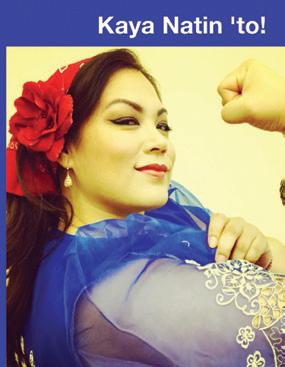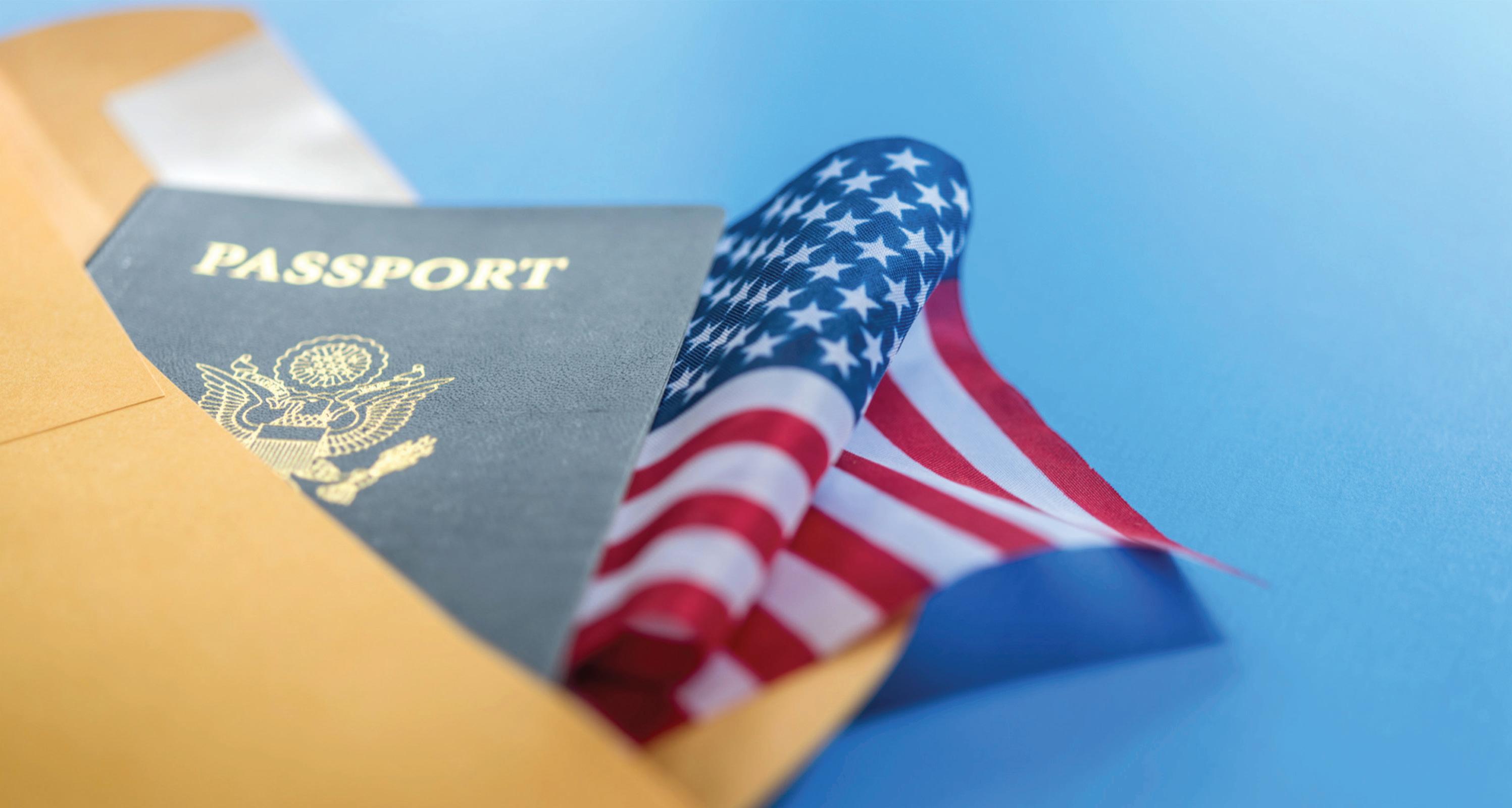












By selen ozturk/eMs
The three weeks since President Trump’s inauguration has brought a near-daily slurry of executive orders — including one ending birthright citizenship.
The three weeks since President Trump’s inauguration has brought a regular slurry of executive orders — including one ending birthright citizenship.
The order, issued on the first day of Trump’s presidency, January 20, argued that the policy granting automatic citizenship to babies born on U.S. soil — as ensured by the 14th Amendment of the Constitution granting citizenship to people “born or naturalised in the United States and subject to the jurisdiction thereof” — does not include people with no U.S. citizen parent.
Although the order is effective February 19, at least eight lawsuits have been filed against it by at least 22 states and several civil rights organizations, and three federal judges in Washington, Maryland and New Hampshire have blocked it. The order would apply if a child’s mother were undocumented or had a legal but temporary immigration status, and if the father were not a U.S. citizen or a legal permanent resident.
How many immigrants may have their citizenship stripped, were the order to take effect?

About 17.6 million U.S. youth under age 18 lived with at least one immigrant parent in 2022, comprising 26% of all 68.6 million U.S. youth, up from 24% in 2010, 19% in 2000 and 13% in 1990. Of these youth, 4.4 million live with an undocumented immigrant parent. An estimated 1.3 million U.S.-born adults age 18 and over were children of undocumented immigrants in 2022.
By Joe Gar Banzos
SAN DIEGO, CA -- Major Gen.
Antonio Mario Taguba (US Army, Ret) celebrated the work of San Diego Filipino American Educators Association (FILAMEDA) teachers at Villa Manila on Saturday Feb. 8th. Team FILAMEDA, ably led by President Maria Fontimayor, is an organization of Fil-Am teachers in San Diego County dedicated to advocating for teachers and educating students. Ms. Fontimayor and her peers met with Gen. Taguba to offer feedback and suggestions in the ongoing roll-out of the Duty to County Program from their experience teaching it at their respective schools.
Duty to Country Program – US
History
“Historically, the idea of something being one’s birthright meant something exclusionary, like an inheritance of rare wealth or status,” said Shanti Elise Prasad, campaign manager for Stop AAPI Hate, at a Tuesday, February 11 town hall on Trump’s birthright citizenship order hosted by the organization.
That Tuesday, Trump took the Maryland federal judge’s nationwide

The Duty to Country is a professionally developed curriculum that tells the stories of WW2 Filipino American veterans and their families in the classrooms. The Duty to Country program was funded by the US Dept. of Education in collaboration with Filipino Veterans Recognition Education Project (FilVetREP). The program is available online and print to all teachers for free. The program content offers easy-to-use teaching modules for teachers at all levels. The content can used as a stand-
alone course or in supplement to existing lesson plans required by school districts.
Gen Taguba, Chairman of FilVetREP recognized the trailblazing work of Team FILAMEDA. He credited
block on his order to the 4th U.S. Circuit Court of Appeals, a sign that he is likely to challenge the Washington and New Hampshire injunctions as well.
“The idea of birthright citizenship flips the script, giving everyone the same right, not a gift or privilege, the day they are born in America, independent of who their parents are,” Prasad added. “It’s fundamental to the dream of America and what it means to be an American.”
By ethnic Media services
SAN FRANCISCO, CA -- When
rapper Kendrick Lamar took the stage at Super Bowl LIX, where the Philadelphia Eagles dominated the Kansas City Chiefs 40-22, fans expected an electrifying performance from one of hip-hop’s most celebrated artists.
When rapper Kendrick Lamar took the stage at Super Bowl LIX, where the Philadelphia Eagles dominated the Kansas City Chiefs 40-22, fans expected an electrifying performance from one of hip-hop’s most celebrated artists.
What they got was even larger: A performance from the Pulitzer Prize winner packed with symbolism, cultural commentary and an unmistakable call to action.
While some viewers criticized the halftime show for lacking spectacle, others saw it as a bold statement in a time when many claim that Black voices are being silenced. In an era where entertainment is often used as

The 14th Amendment was ratified in 1868, after the Civil War, with the intention of granting full citizenship rights to freed African American slaves; its birthright citizenship clause has since been interpreted to include all U.S.-born children, regardless of parental immigration status.
The birthright amendment was

a distraction, was Lamar using one of America’s biggest stages to shake the country awake?
From the moment the show began, it was clear this wasn’t just about music; it was about message.
Lamar is no stranger to blending artistry with activism, and this performance followed suit, leaving plenty for the audience to dissect.
Perhaps the most striking visual of the night was Hollywood A-lister
Samuel L. Jackson’s portrayal of Uncle Sam — a not-so-subtle jab at America’s controversial history when it comes to race relations. Known for his commanding presence in films like Pulp Fiction and Django Unchained, Jackson’s role in the performance was a deliberate statement about power and control.
The original character’s traditional patriotic look was replaced with a more modern, streetwise take, reinforcing Lamar’s recurring theme of Black identity under American rule. Lamar’s background dancers also wore military-style uniforms, possibly symbolizing both obedience to the system and the resistance against it. The red, white and blue color scheme was ever-present, but rather than a celebration of patriotism, it felt like a reflection of America’s contradictions.
The stage itself appeared enclosed at times, evoking imagery of



challenged in a landmark Supreme Court case 30 years later, in 1898, after Wong Kim Ark, a man born to Chinese parents in San Francisco in 1870, was detained upon returning from a trip to China and told he wasn’t a U.S. citizen because his parents weren’t. The Supreme Court ruled in favor of Wong that year, affirming that all U.S.-born children are U.S. citizens.
“When I found out about my family’s history, I thought it was history. But now it’s become a very contemporary threat, and it will disenfranchise millions of us,” Wong’s grandson Norman Wong said at the town hall.
“If we’re to be free in this country, if we’re to keep this country together, we need to be welcomed,” he added. The U.S. is among at least 33 countries where birthright citizenship applies; most are in the Americas, with Canada and Mexico among them.
While the president can’t change the Constitution alone through an executive order, the Constitution can be amended by a two-thirds Congressional majority vote. Cecilia Wang, national legal director of the American Civil Liberties Union (ACLU), which filed the first of the lawsuits challenging the birthright citizenship order, two hours after it was released, said of her case “Not only were there pregnant
confinement, prison and systemic oppression. Fans took to social media to decode these details, comparing them to Kendrick’s past work in albums like To Pimp a Butterfly and DAMN.
The longstanding tension between Lamar and the rapper Drake fueled further speculation about the performance’s hidden messages, especially since Lamar performed “Not Like Us,” a song widely interpreted as a direct shot at Drake. Their feud, which dates back to the early 2010s, escalated after Lamar’s now-legendary verse on Control, where he called out several rappers — including Drake — claiming to be the best in the game. Since then, subliminal shots have been exchanged in interviews, songs and even award show speeches. Adding to that, tennis legend Serena Williams unintentionally became part of the cultural conversation after cameras caught her doing the Crip Walk on stage during “Not Like Us,” but was that blown out of proportion?
The Crip Walk originated in Los Angeles gang culture but has since become a mainstream dance move, often used in hip-hop and sports celebrations. However, because of its roots, it has sparked controversy in the past.
Serena’s Crip Walk moment immediately went viral, leading some to speculate that she was throwing shade at Drake, whom she briefly
